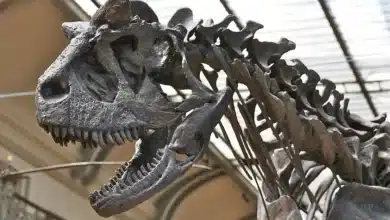Tesla Bot
Tesla Bot
Tesla made a big announcement, saying it would utilize the experience and resources it created for a fully self-driving vehicle to create an autonomous humanoid robot. This is incredible to hear that, but it should not come as a surprise from a company whose interests span everything from vehicles to rooftops to Mars expeditions. While the Tesla Bot is now only on paper, it has a lot of potentials.
Work within a World Built by Humans
The first principle of Tesla’s robot will be to work in a world designed by humans, and for humans, which is why it will be a humanoid robot with a head, two arms that finish in hand with fingers on each end, a torso, and two legs with feet. According to the company, the robot would be friendly and helpful. It’s supposed to be created to take the place of humans in dangerous, monotonous, and tedious tasks.
The company has been vocal about artificial intelligence (AI) hazards and believes there is a pressing need to explore the concept further. Tesla will be able to better shape its future by advancing AI and humanoid robotics technology, or so the theory goes.
Specification
Tesla’s concept, disclosed during its AI Day event, is to make the Tesla Bot as human-like as possible while remaining slower and weaker to safeguard human safety. Height and weight will be around 5 feet 8 inches and 125 pounds, respectively. The robot’s top speed will be about 5 miles per hour, roughly jogging speed for a human. Running or sprinting is much quicker, so if something goes wrong with a Tesla Bot, a human will be able to get out of the way. The robot is designed to be powerful enough to do substantial tasks while posing no harm to humans.
It will be capable of carrying up to 45 pounds and deadlifting 150 pounds. The lifting capacity with arms extended is only 10 pounds. If a human is ever required to overpower a robot due to an accident or malfunction, they will accomplish so.
Technical Details and Artificial Details (AI)
According to the annotation, Tesla’s technical specifications, the face will have a screen on it so the robot may display relevant information. The body will be made of lightweight yet robust materials and will have 40 electromechanical actuators that will serve as joints and muscles for movement. The hands will have a tight cluster of 12 actuators, with 12 more in the arms at the elbows and shoulders, 12 in the legs, 2 to bend the chest, and 2 to move the neck. The balance will be assisted by the feet, which will use force feedback sensing.
Tesla’s humanoid robot will have artificial intelligence (AI) similar to but more advanced than that of a Tesla car. It will have autopilot cameras in the helmet and an entire “autopilot” computer in the torso. Tesla’s new Dojo supercomputer will be used to train movement.
Tesla’s self-driving computers and cars are regarded as synthetic animals that observe and learn in the same way animals do. The Tesla Bot will be similar in appearance but will be bipedal.
Challenges in Tesla Bot
There are still many unresolved questions concerning the Tesla Bot, and much of the knowledge will be in flux even within Tesla’s headquarters because this is only a sneak peek at what’s to come.
The robot rendering has a highly human-like shape, which poses a hurdle in and of itself due to the limited battery space. A Tesla Bot must work for at least a few hours between charges to be helpful. The battery would have to power its high-performance computer in addition to running the limbs, which may consume a lot of energy.
It’ll be fascinating to observe how Tesla responds to the different roadblocks on its way to delivering a general-purpose humanoid robot.






